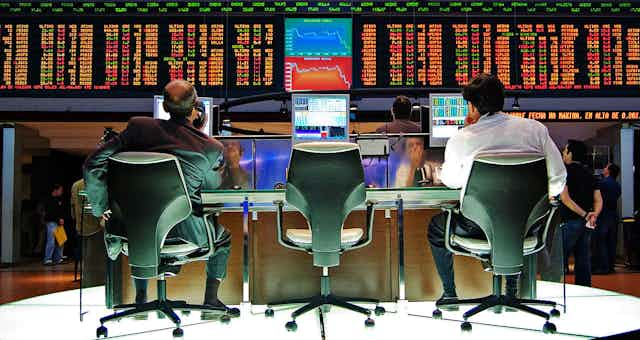High-frequency trading, where computer algorithms are programmed to buy and sell financial products in a fraction of a second, is a profitable business but also a controversial practice. Regulators are concerned about its overall contribution to market quality and market stability and such concerns have led to calls for it to be taxed or constrained.
Italy has just become one of the first countries to implement a tax on computer-based trading activity. Regulators there recently imposed a charge on orders to buy or sell stock that are cancelled within 0.5 seconds of their submission to the exchange. This might sound like a miniscule amount of time, but in a world where a few milliseconds can be the difference between profit and loss, it is an age.
Given that computer-based trading is in the cross-hairs here, it is worth asking what the experts say about the effects of this activity on markets and thus the likely effects of the levy.
Let’s begin by being clear about one key thing. Computer-based trading is not just the preserve of hedge funds and investment banks hoping to make speculative short-term trading profits. Trades done by the pension funds that house your and my retirement savings will also, in large part, be completed using a computer algorithm that makes sub-second decisions. The Italian levy, in its attempts to constrain the former, will probably also impinge upon the latter. As such, the trading efficiency of our pension funds may be hampered and their trading costs increased.
Mixed results
But do we really want to reduce high-frequency trading anyway? If we look at recent academic research, the motivation for a tax on computer-based activity is far from clear. Some work suggests very clearly that algorithmic and high frequency trading make markets more liquid and more efficient without increasing volatility. To the extent that greater liquidity means cheaper trading for the rest of us, this would suggest that computer-based trading plays a positive role in markets.
However, more recent research takes a less positive note, suggesting that high-frequency traders are able to anticipate, and thus exploit, activity from slower rivals. This leads to slow folk like you and I suffering higher trading costs (for example, paying more when we buy stock and receiving less when we sell stock) than we would otherwise have done.
While the academic jury is still out, other groups have clearly made up their mind. European politicians and regulators, and some parts of the media, quite clearly believe that high-frequency activity is a threat to markets. They cite episodes of instability, such as the Flash Crash in May 2010, where the Dow Jones briefly lost $1 trillion in market value before rebounding minutes later. And they worry about the possibility of algorithms being designed to manipulate market prices (such as in the Panther Energy Trading case).
More fundamentally, some ask what possible socially useful rationale there can be for allowing an algorithm to trade into a stock and then trade out again within 100 milliseconds. Thus, while many firms claim to be making markets rather than harming them, and despite the evidence suggesting algorithmic and high-frequency trading can benefit markets, we should be prepared for further rules to constrain computer based activity.
Follow the Italians?
So what about the precise implications of the Italian levy? Note that this is not a tax on trading activity itself. Italy already has one of those, a financial transaction tax imposed earlier this year, which is reported to have greatly reduced trading volumes.
This is a charge for submitting and then very quickly cancelling an order to buy or sell. Thus it clearly reduces the incentives of computer-based traders to post bids to buy stock, and offers to sell stock, against which others can trade. As it hampers the market making function of computer-based trading systems then we will likely see headline measures of liquidity deteriorate (volumes will drop and bid-ask spreads will rise).
On the flip side, though, making it costly for algorithms to quickly post and then cancel orders may make it harder for them to prey on slower traders and to manipulate markets. It may mean that displayed quotes on an exchange are more representative of the prices a “slow trader” will get when he or she executes an order.
By making designers of algorithms think more carefully about how and when they place orders, it may reduce the probability of seeing wild swings in markets caused by a badly designed algorithm pumping thousands of orders into a market in error. These benefits from constraining computer-based activity, while hard to measure and to quantify, should not be ignored.
So regulators face a trade-off here. Constraining high frequency and algorithmic trading is likely to make markets more expensive to trade but could, at the same time, make them fairer and more robust. Quite clearly, Italian regulators feel that this type of trading endangers the integrity of markets to a great enough extent that limiting it and seeing liquidity fall is a price worth paying. Their counterparts in other countries will be considering the same question.

